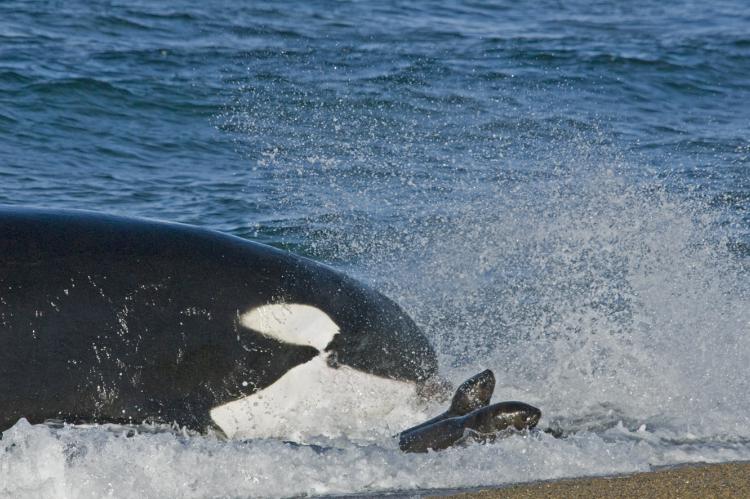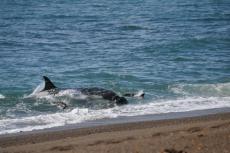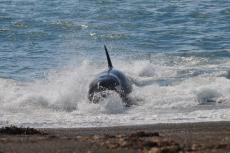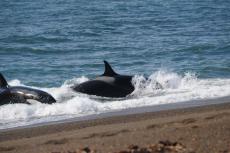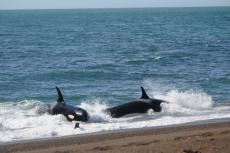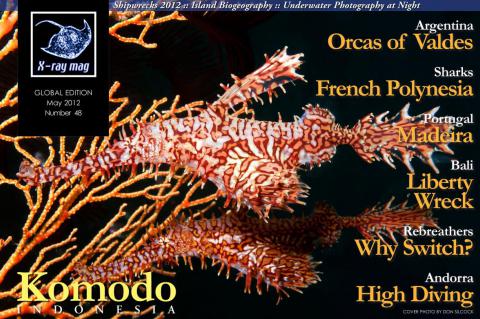Orcas of Valdes
The Valdes peninsula in Patagonia, has become renowned for the Orcas and the spectacular hunting technique they use to catch sea lion and seal pups off the beach, something so called an ‘intentional stranding’ by researchers.
Tags & Taxonomy
The Orcas of Valdes
Orcas have been observed hunting around the Cape of Punta Norte since 1976. Two male orcas, named Bernardo and Mel, taught the whole population how to successfully catch sea lion pups off the beach, a technique that is now transferred from generation to generation. Nowadays, up to 13 resident orcas showcase their sophisticated hunting skills as they pursue young sea lion pups playing on the beaches. If you have ever seen footage of such an attack, it was without doubt filmed at Punta Norte, on a 50 meter wide so-called ‘attack channel’. This area is not accessible for tourists. Only photographers or filmmakers with a special government permit are allowed to enter this area.
There is a second hunting area on private property ground of Estancia La Ernestina, where the Punta Norte Orca Research Project (PNOR), founded in 2004, is based. These beaches are also prohibited for the public, yet a small group of guests of the Estancia is permitted to enter the beach area, guided by Juan Capello, the owner of the Estancia and one of the principal scientists of the Orca Project. Photographs taken by participants of our expeditions are evaluated and given to the PNOR for identification purposes.
The Hunt
The beaches of Peninsula Valdes are surrounded by shallow reefs that emerge at low tide. Between these reef formations channels are formed, which still allow water flow at low tide. These channels are used by the orcas while they hunt, hence the name, ‘attack channels’.
The orcas are only able to hunt for the sea lion pups on the beaches when tide, wind and weather conditions allow the animals to get close to the shore. Typically, the orca can start hunting from three hours before high tide to three hours after high tide.
When the tide is rising, the orcas have the opportunity to manoeuver closer to the beach where the sea lions frolic, the main prey of the orcas of Valdes.
Southern sea lions (Otaria flavescens) at Peninsula Valdes give birth in January. Each year between February and April, the small ‘nurseries’ of sea lions pups start exploring their surroundings and play in the shallow surf close to the beach. With their first attempts at learning how to swim and unaware of danger, the pups are most vulnerable in these first few weeks and become an easier target for the orcas to prey upon. Even their mothers are slow to warn and protect them, as the orcas begin the approach.
Very often we can watch the orcas patrolling the beach. With their echolocation skills, the orcas continuously scan the shallow water and receive a detailed picture of their surroundings. The animals also possess the ability to determine whether the prey is an adult animal or a juvenile. Instead of wasting energy on chasing experienced, fast seals, the orcas rather concentrate on the less challenging and less heavy, young pups. The chances of capturing an adult sea lion are less than 20 percent, whereas catching younger animals offer a chance of more than 50 percent. In addition, it is possible that the soft, tender meat of the young pups tastes better to the orcas.
The orcas are also known to display inventive tactics that trick the sea lions. A part of the group of orcas will swim fast and noisily towards their prey, which in turn flees in the opposite direction where another orca is waiting to catch the pup. The attack is fast. When the timing is right, the orca rides a wave right up onto the beach, snatches up a sea lion pup, and then rolls back out into the water with the next wave.
Apart from the sea lion pups, the orcas also hunt for young elephant seals. In March 2011, at the attack channel of Punta Norte, we were able to witness, and get footage of an extraordinary attack by a female orca named, Marga, catching a young elephant seal weighing around 500 kg! ...
Download the full article ⬇︎
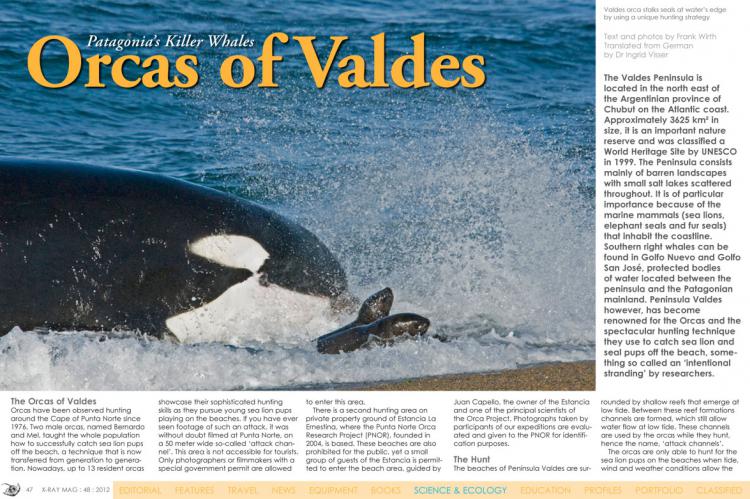
Originally published
X-Ray Mag #48
Komodo Island; Orcas of Valdes in Patagonia; Madeira oceanic archipelago; Bali's Liberty wreck; Why switch to rebreathers, with Mark Powell; Cavern training, with Alan Purcell; It's raining sharks in French Polynesia, with Andy Murch; Shipwrecks 2012 report; Island Biogeography; Night photography, with Lawson Wood; Andorra: At high altitude in the Pyrenees; Plus news and discoveries, equipment and training news, books and media, underwater photo and video equipment, turtle news, shark tales, whale tales and much more..


